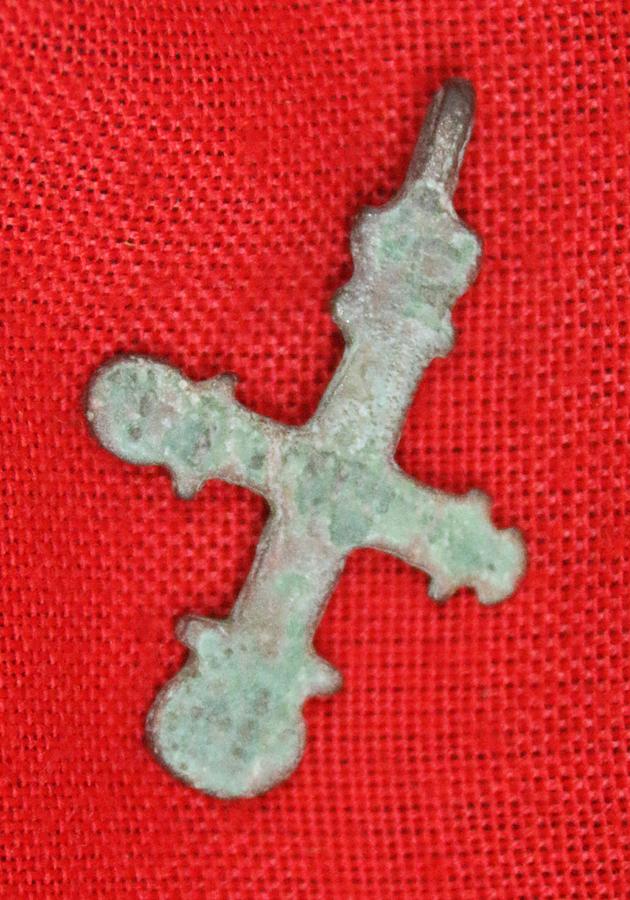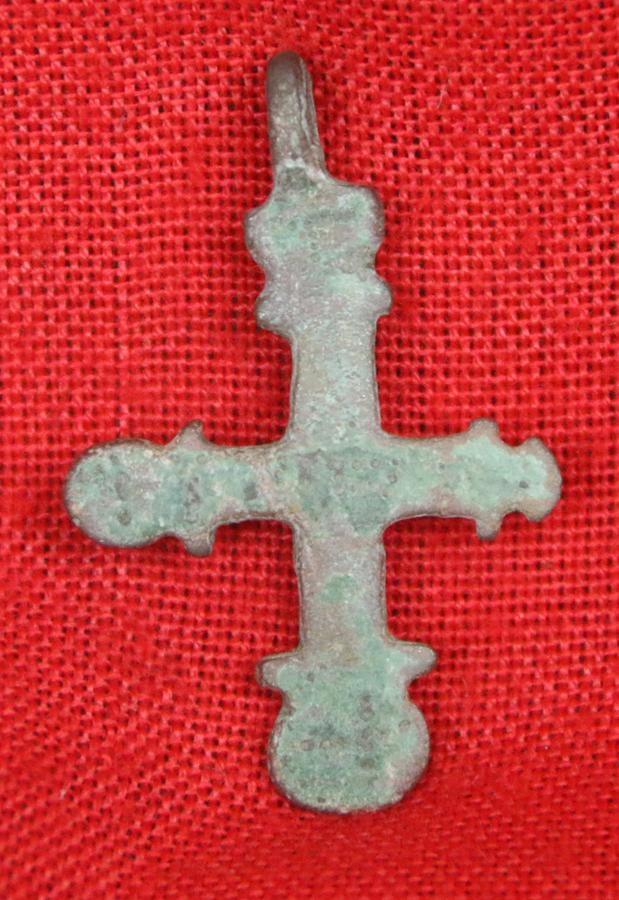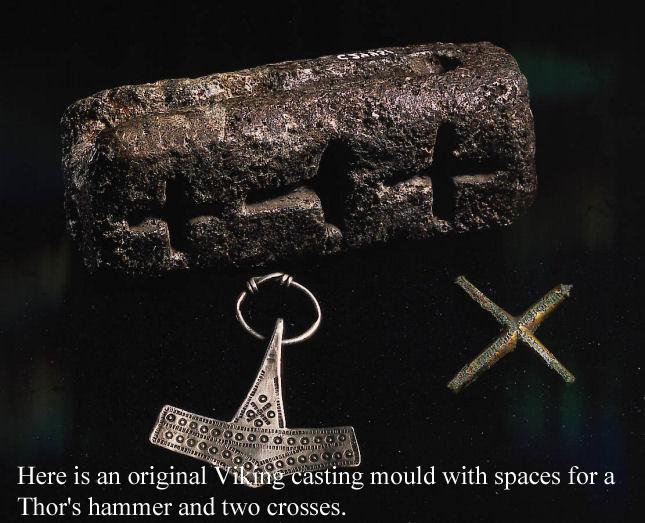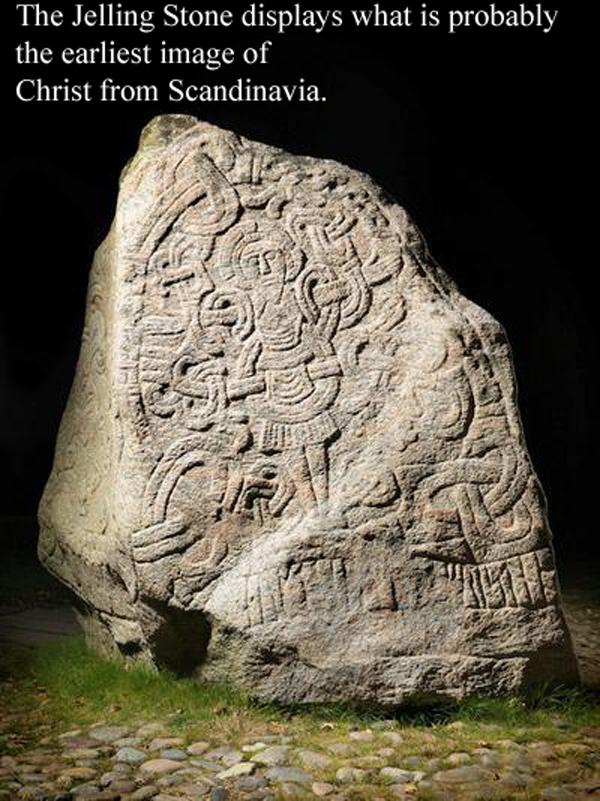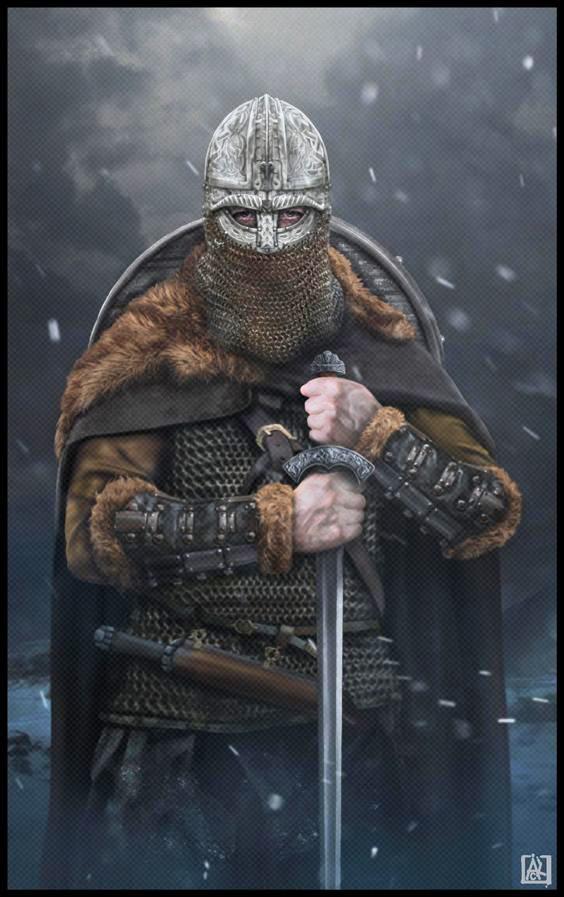Original Viking Cross Pendant, Worn in the Viking Lands of Grand Prince Oleg and Vladimir the Great Period, A Christian Cross Pendant in Bronze
Part of a small Viking artefacts collection, the first cross sold within a day or so. A one piece cast bronze cross with chain ring neck mount, thus still eminently wearable today. From a fabulous small collection of original, Viking, 9th century early Christian artefacts. Only two items, including this one remains for sale, the other sold within 10 minutes of upload to the site.
A Viking realm founded by the Viking, Oleg, ruler of Novgorod Kievanrus from c. 879, who seized Smolensk and Kiev 882, which became his capital. Viking Prince Oleg can be seen depicted, and as a central character, in the well regarded and incredibly popular worldwide drama series ‘Viking’, in series 6 shown by the History channel.
Extending his rule, Oleg united local Slavic and Finnish tribes, defeated the Khazars, and, in 911, arranged trade agreements with Constantinople. His empire peaked in the 10th and 11th centuries under Vladimir I and Yaroslav, becoming eastern Europe’s chief political and cultural centre. At Yaroslav’s death in 1054, his sons divided the empire into warring factions. The 13th-century Mongol conquest decisively ended its power. Although Oleg was pagan it was the time that Christianity took hold in Viking realms. In the Viking Age most of Europe had converted to Christianity, but the Vikings were very satisfied with their own gods and held on to them. ... By the end of the Viking period, around 1050, most Vikings were Christians. They were baptised, went to church and were buried in a Christian manner. he Viking Age was a period of considerable religious change in Scandinavia. Part of the popular image of the Vikings is that they were all pagans, with a hatred of the Christian Church, but this view is very misleading. It is true that almost the entire population of Scandinavia was pagan at the beginning of the Viking Age, but the Vikings had many gods, and it was no problem for them to accept the Christian god alongside their own. Most scholars today believe that Viking attacks on Christian churches had nothing to do with religion, but more to do with the fact that monasteries were typically both wealthy and poorly defended, making them an easy target for plunder.
...monasteries were typically both wealthy and poorly defended, making them an easy target for plunder.
The Vikings came into contact with Christianity through their raids, and when they settled in lands with a Christian population, they adopted Christianity quite quickly. This was true in Normandy, Ireland, and throughout the British Isles. Although contemporary accounts say little about this, we can see it in the archaeological evidence. Pagans buried their dead with grave goods, but Christians normally didn't, and this makes it relatively easy to spot the change in religion.
As well as conversion abroad, the Viking Age also saw a gradual conversion in Scandinavia itself, as Anglo-Saxon and German missionaries arrived to convert the pagans. By the mid-11th century, Christianity was well established in Denmark and most of Norway. Although there was a temporary conversion in Sweden in the early 11th century, it wasn't until the mid-12th century that Christianity became established there. As part of the process of conversion the Christians took over traditional pagan sites. A good example of this can be seen at Gamle Uppsala in Sweden, where the remains of an early church stand alongside a series of huge pagan burial mounds. for those that follow the superb History Channel's series, Vikings, he is the main protagonist of series 6. Kievan Rus was largely pagan until the late 10th century, when Vladimir the Great took power and introduced Christianity. The conversion actually resulted from a deal between Vladimir and the Byzantine Emperor. Vladimir agreed to convert to Christianity and send the emperor 6,000 soldiers to defend his throne; in exchange, Vladimir would marry the emperor’s sister.The transition to Christianity in Denmark took place gradually and without major conflict. The Vikings regarded the new belief as supplementing the Nordic gods – it was not simply a choice between the old and the new religion. The Vikings’ belief in many gods meant that it was possible for the new Christian god, White Christ, to be worshipped alongside gods like Thor and Odin.
In this way both religious beliefs could exist alongside each other. One religion did not exclude the other. This is shown by the find of a mould, which the smith could use to make both Thor’s hammers and Christian crosses. It was a time of great change and perhaps the Vikings sought security in both religious creeds – just to be on the safe side.a smith’s mould from Trend in Jutland, which has spaces for two crosses and one hammer. The smith could use it to produce exactly which amulets his customers wanted. In addition, a medieval font from Gettrup, in Jutland, displays both crosses and Thor’s hammers. Several Thor’s hammers, which feature cross ornamentation, have also been found. The Viking belief in the Norse gods was thus reinterpreted and drawn into Christianity.The Jelling Stone displays what is probably the earliest image of Christ from Scandinavia. But there are also clear pre-Christian elements on the stone. Tendrils or interlacing branches, surround Christ, just as Odin could also be depicted surrounded by tendrils or branches. 42mm x 28mm
Every item is accompanied with our unique, Certificate of Authenticity. Of course any certificate of authenticity, given by even the best specialist dealers, in any field, all around the world, is simply a piece of paper,…however, ours is backed up with the fact we are the largest dealers of our kind in the world, with over 100 years and four generation’s of professional trading experience behind us
Code: 24035
345.00 GBP



